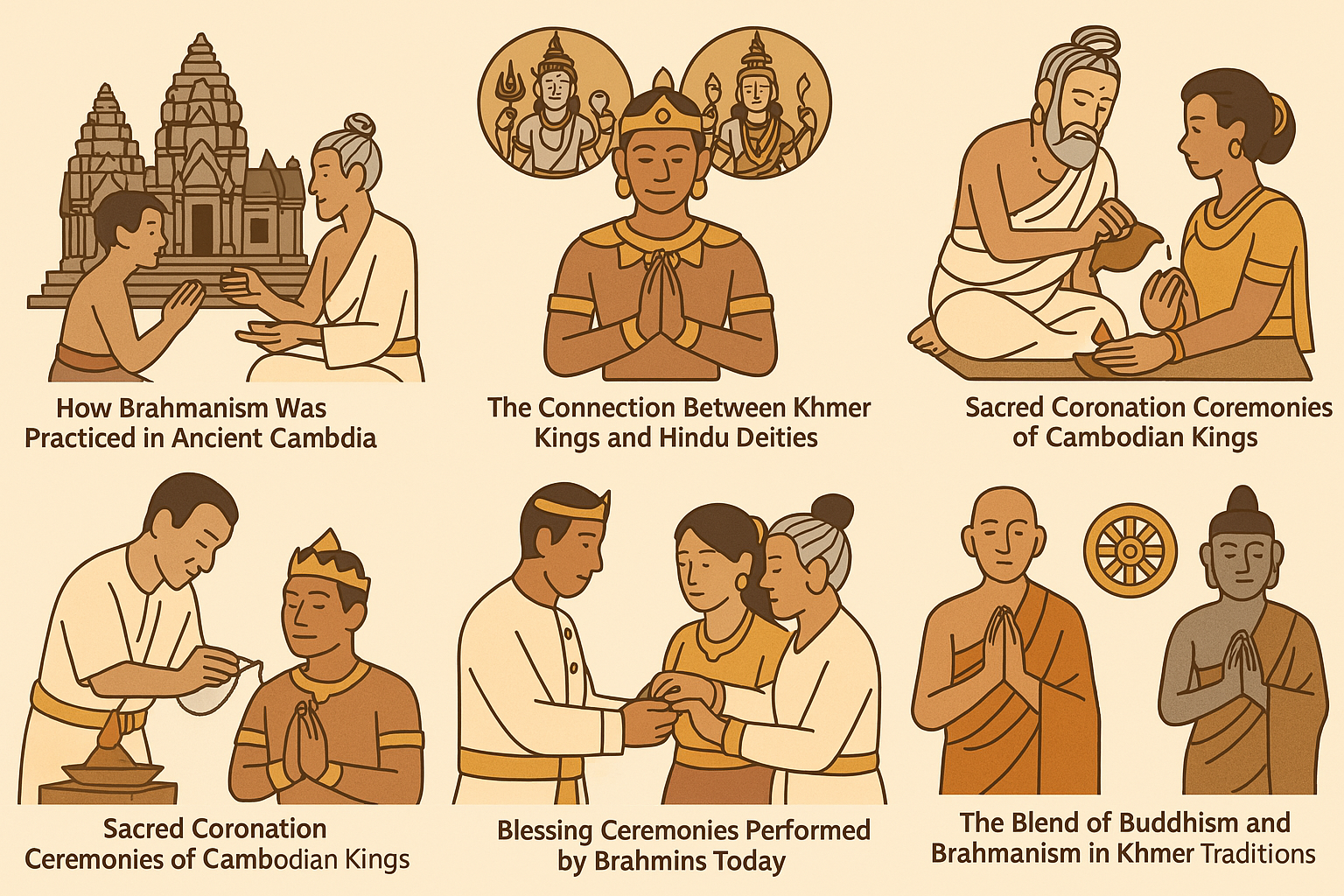Cambodia is a country where the rhythms of daily life, moral values, and even state functions are deeply intertwined with the teachings of Theravāda Buddhism. As the official religion of Cambodia and the faith of over 95% of its population, Theravāda Buddhism is not just a spiritual path—it is the cornerstone of Cambodian identity, culture, and community. This article explores the rich history, spiritual philosophy, and profound societal impact of Theravāda Buddhism in the Kingdom of Cambodia.
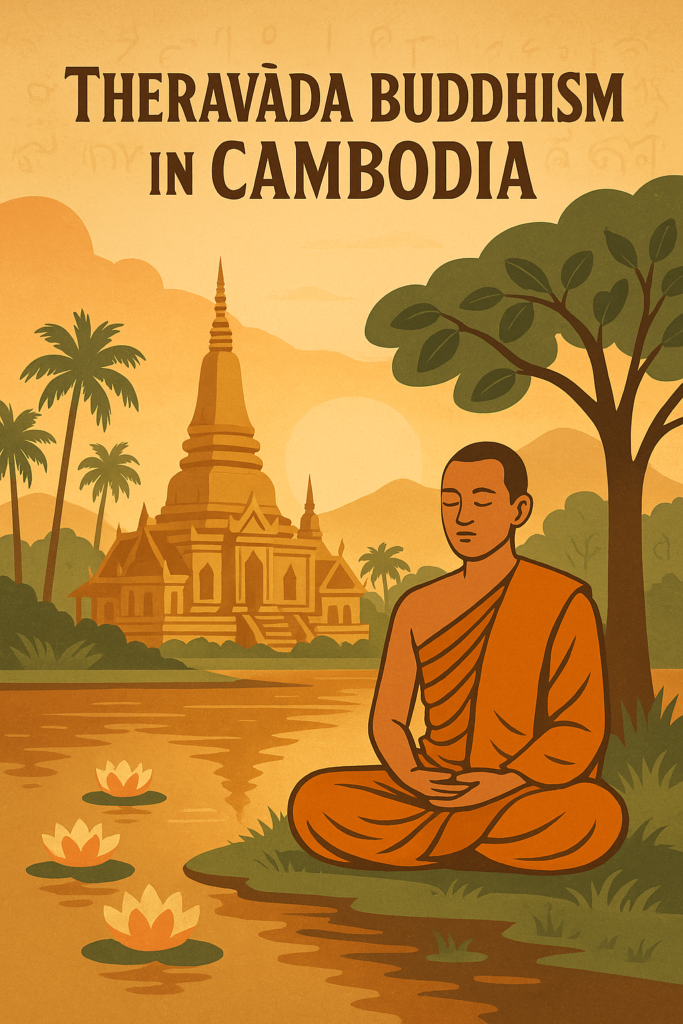
The History of Buddhism in Cambodia

Buddhism first arrived in Cambodia more than two millennia ago. The earliest forms were influenced by Indian traders and missionaries, who brought both Mahāyāna and Theravāda traditions. Inscriptions and art from the Funan and Chenla periods (1st–9th centuries CE) reveal the coexistence of Buddhism and Hinduism, with Mahāyāna Buddhism especially flourishing under royal patronage.
Theravāda Buddhism gained prominence during the 13th century, following the decline of the Angkor Empire. King Jayavarman VII, a devout Mahāyāna Buddhist, built numerous temples and hospitals, yet it was after his reign that Theravāda Buddhism spread from Sri Lanka through Siam (Thailand) and became dominant in Cambodia. Its focus on individual enlightenment and accessible teachings appealed to rural communities and reshaped Khmer spiritual life. By the 15th century, Theravāda Buddhism had become the state religion—a position it still holds today.
How Theravāda Buddhism Differs from Mahāyāna Buddhism
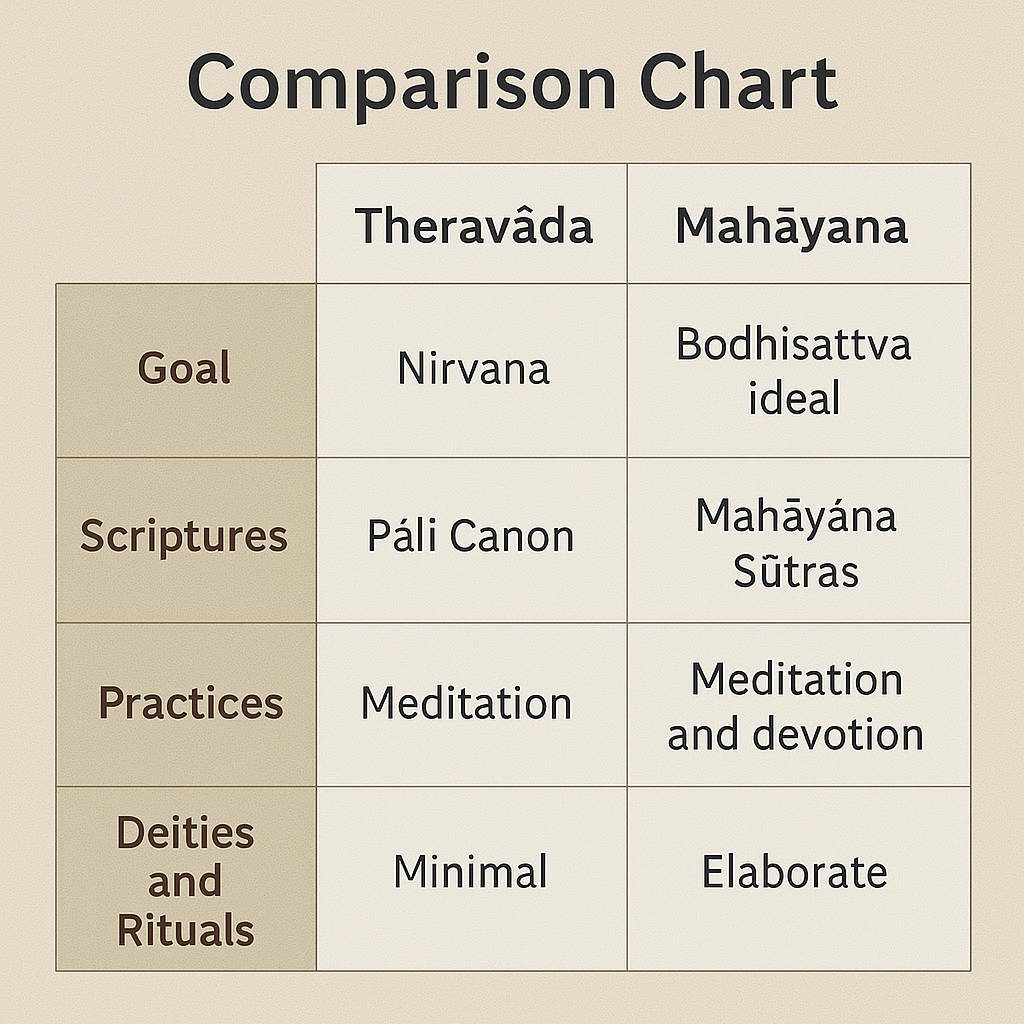
Theravāda and Mahāyāna are the two major branches of Buddhism, each with distinct philosophies and practices. Theravāda, meaning “The Teaching of the Elders,” emphasizes personal discipline, meditation, and the attainment of Nirvana through self-effort. It reveres the Pāli Canon as its central scripture and regards the historical Buddha, Siddhartha Gautama, as a teacher—not a divine figure.
In contrast, Mahāyāna Buddhism, common in East Asia, embraces a broader pantheon of Buddhas and bodhisattvas and encourages practitioners to attain enlightenment for the benefit of all beings. While Mahāyāna places greater emphasis on ritual and metaphysical concepts, Theravāda Buddhism in Cambodia focuses on practical ethics, meditation, and community merit-making.
The Role of Monks in Cambodian Society
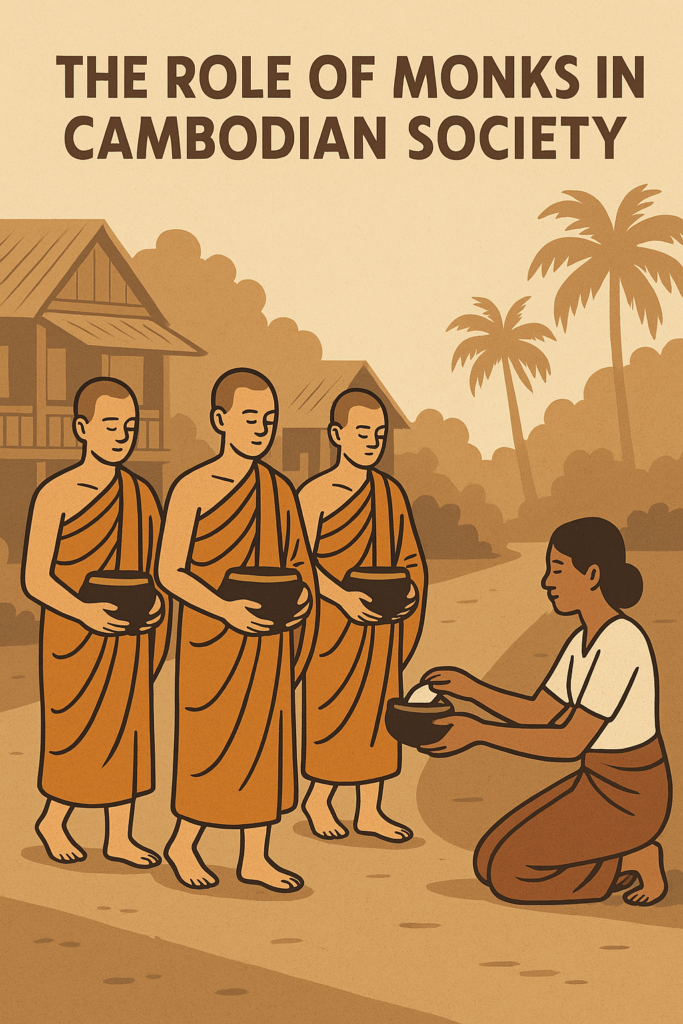
Monks (bhikkhus) hold a revered status in Cambodian society. They are seen as spiritual guides, moral exemplars, educators, and community caretakers. Dressed in distinctive saffron robes, monks live in wats (monasteries) and follow a strict monastic code known as the Vinaya.
Their influence goes beyond temple walls. Monks often officiate life ceremonies such as weddings, funerals, and blessings. They are consulted for advice, healing, and guidance, especially in times of crisis. For many families, it is a rite of passage for young boys to be temporarily ordained as novices (sāmaṇeras), a tradition that connects the younger generation with Buddhist values and cultural heritage.
Buddhist Precepts and Daily Practices in Cambodia
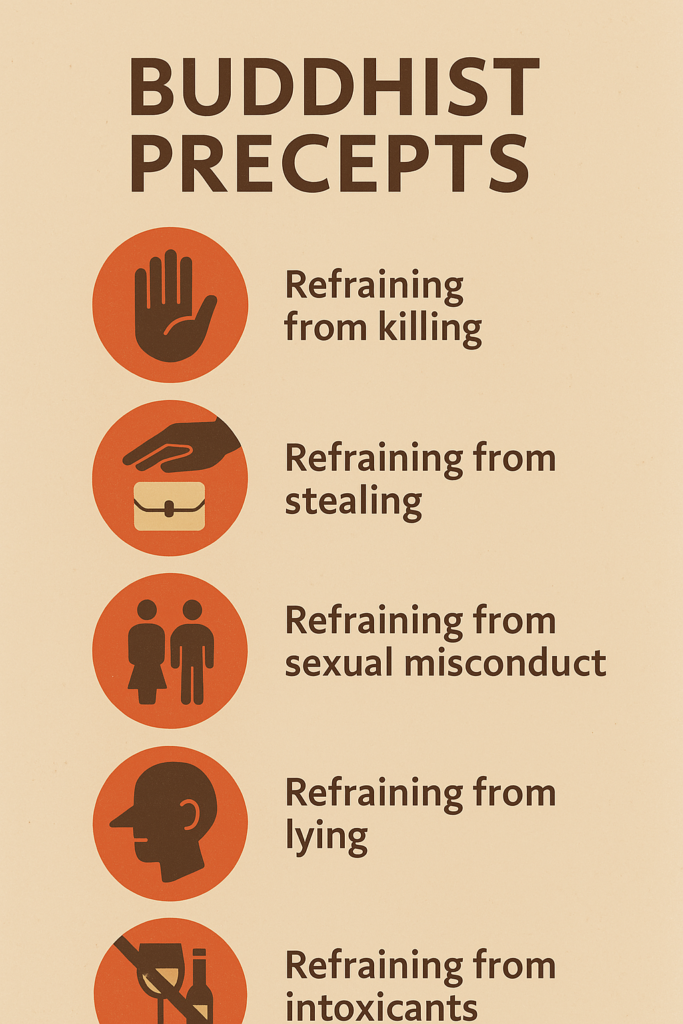
Buddhist ethics form the moral foundation of Cambodian life. Laypeople commonly follow the Five Precepts (pañca-sīla):
- Refraining from killing
- Refraining from stealing
- Refraining from sexual misconduct
- Refraining from lying
- Refraining from intoxicants
On holy days (Uposatha), devout Buddhists may observe eight precepts, including fasting after noon and practicing celibacy. These practices are deeply rooted in community life, especially during festivals or during the Buddhist Lent (Vassa), when increased devotion is expected.
Daily rituals include lighting incense, offering food to monks, and chanting scriptures. Homes and businesses often feature small shrines where offerings are made to the Buddha, ancestors, and guardian spirits—a fusion of Buddhism and traditional animism.
The Significance of Merit-Making in Khmer Buddhism
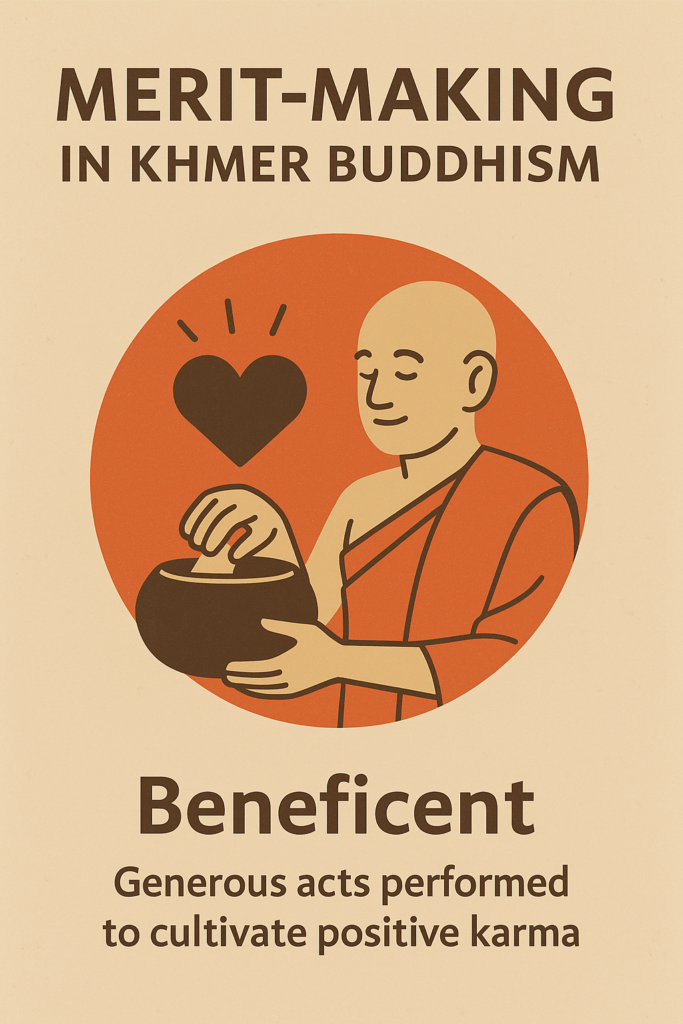
Merit-making (puñña) is central to Cambodian Buddhism. It refers to performing good deeds to accumulate positive karma, which leads to better rebirths and spiritual advancement. Common acts of merit include:
- Donating food and robes to monks
- Supporting temple construction
- Releasing animals (such as birds or fish)
- Observing precepts and chanting
Major life events—births, weddings, anniversaries, and funerals—often involve merit-making ceremonies. These acts not only express individual piety but also strengthen social bonds and affirm communal identity.
Buddhist Monastic Education and Its Impact

Wats have traditionally served as centers of learning in Cambodia. Before formal schools were widespread, monasteries provided education to boys—teaching them reading, writing, arithmetic, and Buddhist philosophy.
Even today, monastic education continues to play a vital role, especially in rural areas. Monks often help preserve classical Khmer literature, religious texts, and ethical teachings. Monastic schools promote literacy, moral development, and cultural continuity, and they often fill educational gaps where public resources are lacking.
How Buddhism Influences Cambodian Laws and Customs

Theravāda Buddhism has profoundly shaped Cambodia’s legal and moral landscape. Its principles emphasize non-violence, compassion, and respect for elders and authority, which are reflected in many Cambodian customs.
For instance, the concept of karma influences how Cambodians view justice and social harmony. The practice of offering food to monks fosters generosity. Buddhist teachings also inform national holidays, with Pchum Ben and Visak Bochea enshrined as public commemorations of Buddhist values.
While Cambodia is constitutionally a secular state, its legal framework often reflects Buddhist morality—especially in areas like family law, education, and public behavior.
Monks’ Involvement in Community Work and Charity

Monks in Cambodia are more than spiritual leaders—they are active participants in community development. In times of disaster, monks often lead relief efforts, organize food distribution, and offer shelter to the displaced.
Some wats operate as centers for health, education, and even environmental activism. Monks have been involved in campaigns to combat deforestation, promote clean water, and support HIV/AIDS education.
This role has become increasingly important in the post-Khmer Rouge era, as Cambodia rebuilds its social fabric. Many NGOs now partner with monasteries to support grassroots projects, recognizing the deep trust monks hold in their communities.
Buddhist Meditation Practices in Cambodia
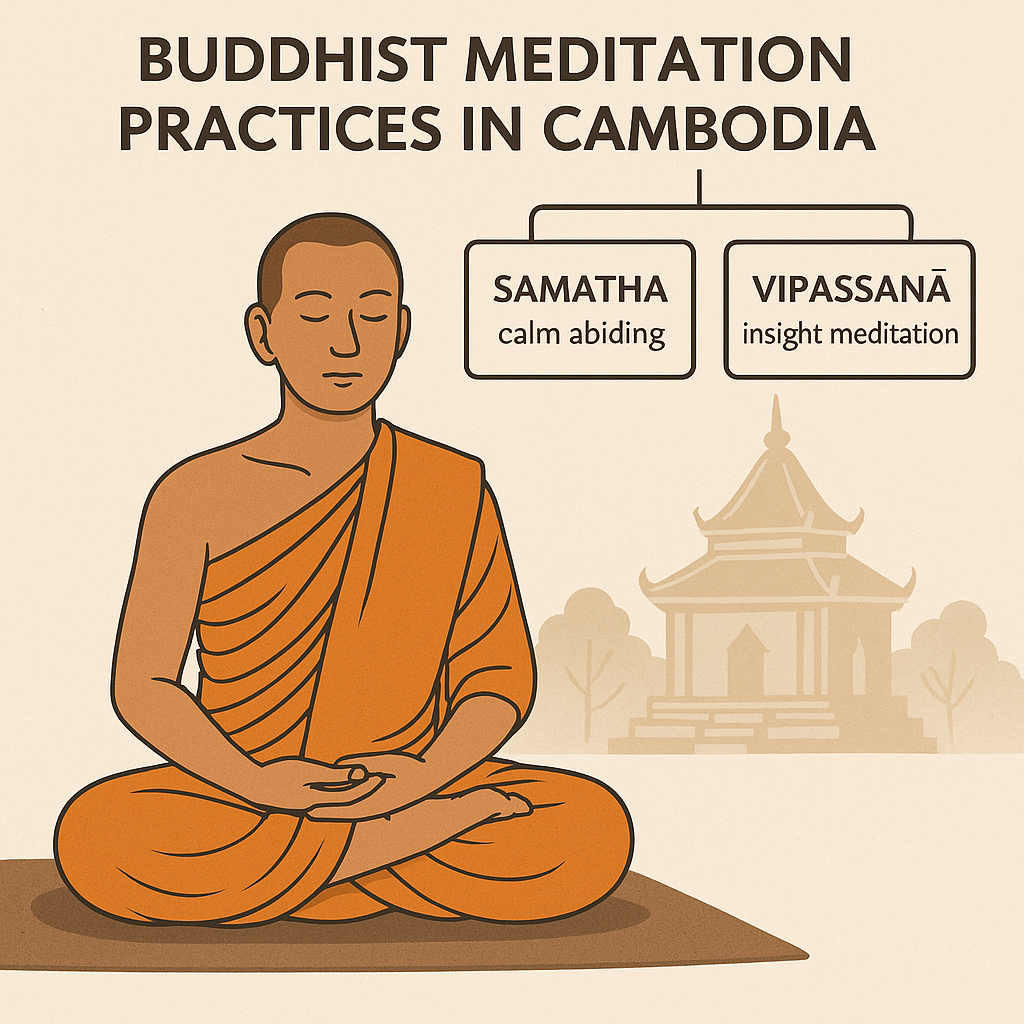
Meditation (bhāvanā) is an essential component of Theravāda Buddhism, and while not practiced universally, it is highly respected. Cambodian monks and lay practitioners engage in two main types of meditation:
- Samatha (calm-abiding): Focusing on the breath to cultivate concentration
- Vipassanā (insight): Observing the nature of thoughts, sensations, and impermanence
Many temples offer meditation instruction, especially during retreats or the Vassa season. Meditation is not only a path to enlightenment but also a means of healing trauma—a significant aspect in a country that has endured genocide and upheaval.
Conclusion: The Living Spirit of Cambodia

Theravāda Buddhism is more than a religion in Cambodia—it is a living tradition that shapes the kingdom’s identity, from its golden pagodas and saffron-clad monks to the quiet rituals practiced in humble homes. It offers ethical guidance, cultural cohesion, spiritual resilience, and a sense of hope.
In an era of rapid modernization, Buddhism remains a moral compass and a cultural anchor for millions of Cambodians. Whether through a morning alms round, a temple chant echoing across rice fields, or a child reciting prayers at a wat school, the spirit of the Dhamma continues to illuminate Cambodian life.


